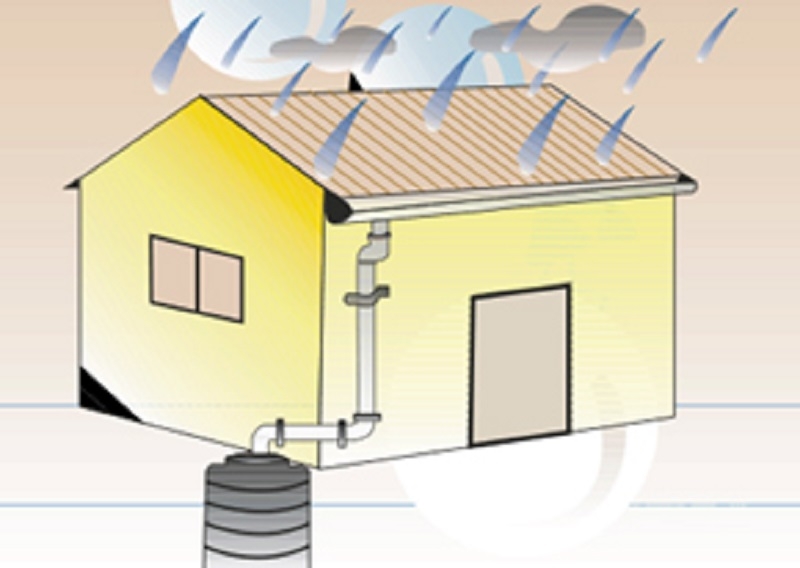H‘Reutilise water at household-level to conserve it’
| Date :02-Jul-2019 |

By Sagar Mohod:
As every drop of water is precious, awareness about using clean water judiciously is rising among citizens and stress is now on conserving it. While rain water harvesting idea is fast catching up among citizens, there are other aspects related to conserving water and recycling is one among them and still to gain popularity in the society. On wider scale, respective corporations do have invested heavily in treating waste water but at household level also water can be easily reutilised through light treatment process. These small recycling plants at individual premises can work wonders, said Dr Sandeep Narnaware, Project Executive, Nagpur Smart and Sustainable City Development Corporation Limited (NSSCDCL). He has done his PhD on aspect of recycling grey water to reduce dependence on already stressed water resources.
But prior to that Dr Narnaware was part of a study done in National Environmental Engineering Research Institute (NEERI) on recycling waste water flowing out of bathrooms. NEERI sometimes back had done experimental study to prepare standard procedure for such projects in actual field conditions. They had done a study on recycling and channeling water used in bathrooms in households for non drinking purpose. The contention of scientists is that water utilised in bathroom is normally not much contaminated compared to one emitting from latrines.
Therefore the study focused on how to reprocess the grey water as it is referred to and what steps would be needed for recycling the same and what would it cost. The experiment was conducted at one of the quarters within NEERI colony and the results were quite encouraging said, Dr Narnaware. The experiment that time provided encouraging feedback and cost involved is not very heavy, if one were to use drums. The only major cost is dual plumbing that is required to separate water emanating from bathrooms and latrines. But that cost pales if one is to calculate the returns accruing from savings on clean water sourced from corporation. Meanwhile, after NEERI tasted success in removing impurities from bathroom water and making it fit for non drinking purposes, they were approached for constancy. Narnaware recalled that Central Railway's Nagpur Division had approached NEERI to help them with a recycling plant as their requirement of water is on higher side as they need to continuously sprinkle it on the cricket ground.
So NEERI provided the guidance for setting-up waste recycling plant with capacity of 25,000 litres using the same formula that was utilised in its colony. This was sometimes in year 2011-12. Stating the requirement of the system, he said one need to construct four chambers for filtering the water coming out from bathroom. The size of chamber is just 2x2 and they are filled with sand, pebbles, gravel to purify the grey water naturally. The natural slope with which each of the chambers is constructed provides necessary spillway for flowing water that helps remove the impurities. As per a study, on an average water requirement in India per capita per person is 165 litres a day. And from it nearly 65 per cent is utilised in either bathroom or kitchen sink and same can be harnessed for reused. About 35 per cent of clean water is utilised in toilet and same is called black water. So if this major part of fresh water supplied by corporation is recycled the savings would be immense and pay back period for cost incurred earlier is just two-years. So a household or a flat scheme can cut down its cost of water sourced from corporation by nearly half and it is quite substantial savings given the current rates in city. Also lesser water requirement also eases burden on civic body and ensures proper security of sacred resources. Besides the environment benefits accruing to society as a whole is also immense.
The filtration process Explaining the filtration process, Dr Narnaware said if one is to use a drum then the cost incurred on recycling water is just Rs 5,000. The water flows into drum and at the bottom there is gravel and charcoal and the filtered water flows out through the tap. This is as simple as that. Using the concrete chambers then at mouth of first tank (it is collection tank) a net is affixed to capture floating material. Thereafter the water moves into next two tanks where up and down filtration system works as it is filled with gravel of various dimensions, 10 to 20 mm, 20 to 40 mm and 40 to 80 mm. He said even one could use locally available material and in last tank there is system of step aeration. This ensures that when water flows in the odour is taken care of and oxygen present is dissolved. The water thus stored in fourth tank needs to be just treated with bleaching powder and it is ready to be used locally for watering plants or for other non drinking purposes.